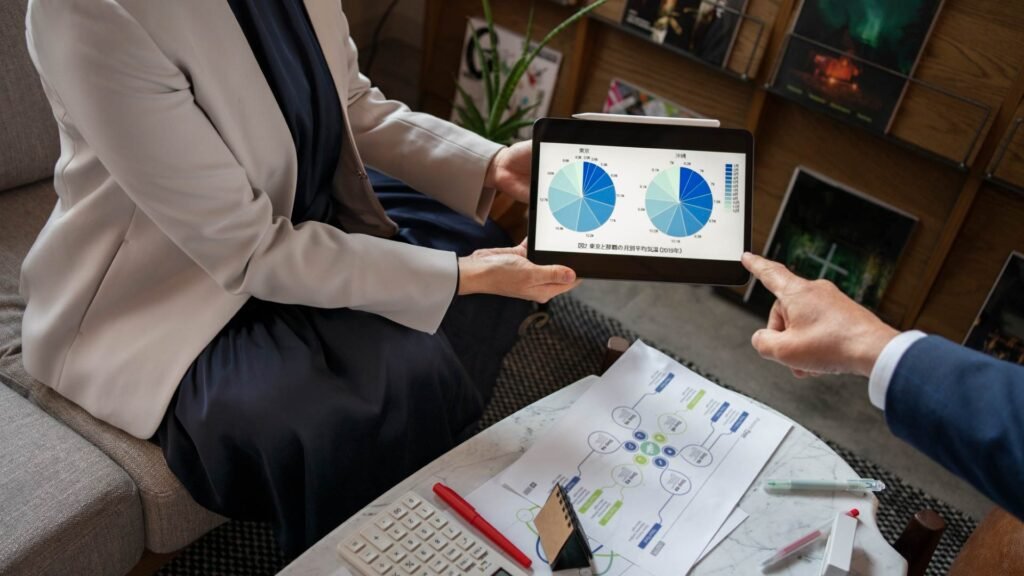[ad_1]
1. Measure ROI across Full-Funnel Marketing
2. Attribution Models
3. Real-Time B2B Data and Examples
3.1 LinkedIn’s Account-Based Marketing
3.2 Salesforce’s Lead Nurturing Campaigns
4. Maximizing Marketing and Sales ROI
4.1 Alignment of marketing and sales teams
4.2 Marketing Automation Tools
4.3 Constant Optimization
Conclusion
In the contemporary world where B2B marketing is becoming even more saturated, it is crucial to show at least average ROI rates for full-funnel marketing. In essence, full-funnel marketing, whether through awareness and consideration or the decision stage, simply requires an approach that targets potential clients at any point in their buying process.
One of the critical elements that can drive sustainable growth for B2B companies is full-funnel marketing. Traditional marketing, in contrast, only caters to one aspect of the customer journey and does not allow full-funnel client engagement from the awareness stage to the final decision-making phase. The customer acquisition methodology supports the growth of a business while reinforcing long-term commitments toward CLV.
Awareness Stage: This is the first step in the marketing funnel, where the prospect becomes aware that you exist as a business. Good promotional tactics for this stage are content marketing, social campaigns, and business events. HubSpot also states that 61% of marketers believe improving SEO and growing organic presence are the top inbound marketing priorities. A company can now start to attract relevant traffic and thought leadership by delivering high-quality content that resonates with industry pain points.
Consideration Stage: Prospects are now in the process of evaluating the different solutions to their problems. It is important to note that nurturing leads with targeted email campaigns, webinars, and case studies has to be done here. According to the Demand Gen Report, 47% of B2B buyers consume three to five pieces of content before speaking to a salesperson, so helpful information that educates and informs can have a significant effect on the decision-making process.
Decision Stage: This is where the prospects make their final buying decision. Customized demonstrations, the use of free trials, and detailed comparisons with other products can convert leads into customers. McKinsey once reported that a company using a 360-degree personalization approach garnered 5–15% more revenue, with the cost dropping 10–30% in marketing ROI. Personalized engagement at this stage is critical to driving ROI and closing deals.
1. Measure ROI across Full-Funnel Marketing
KPIs: To measure the ROI of full-funnel marketing, it’s necessary to track relevant KPIs at every funnel stage. These include:
Awareness Stage: website visits, social media activity, and brand conversations.
Consideration Stage: Lead capture data, email open rates, click-through rates, and webinar registrations.
Decision Stage: That is the conversion rates, sales qualified leads (SQLs), and deal closure rates.
2. Attribution Models
They help understand which marketing efforts contribute most to conversions. Multi-touch attribution models, in particular, do a pretty good job at every touchpoint across the journey. Forrester, in a report, says B2B marketers using multi-touch attribution models show 30% more effectiveness in marketing than those who do not.
3. Real-Time B2B Data and Examples
3.1 LinkedIn’s Account-Based Marketing
The ABM strategy used by LinkedIn is a great example of full-funnel marketing. This enhanced their account interaction and conversion since they posted content and ad spaces that would capture the targeted accounts. In their case study, it was reported that businesses using LinkedIn’s ABM solutions experienced a 30% higher close rate, and the deal size was 22% higher than using conventional ways and means of marketing.
3.2 Salesforce’s Lead Nurturing Campaigns
Salesforce is one of the best at utilizing full-funnel marketing, ranging from segmenting the audience to delivering relevant content for each stage. No wonder they reaped the excellent results of a 20% lead increase in the conversion rate and a 10% decrease in the sales cycle length—simply proving how much effect proper execution of the entire funnel has on ROI.
4. Maximizing Marketing and Sales ROI
4.1 Alignment of marketing and sales teams
A solution towards maximum acquisition and purchase is needed. In effect, “B2B organizations with tightly aligned sales and marketing functions achieved 24% faster revenue growth and 27% faster profit growth over three years, as published by SiriusDecisions. The proper cooperation and smooth transfer of leads between marketing and sales help companies increase their rates of lead conversion and, hence, reduce their selling cycles.
4.2 Marketing Automation Tools
For the complete funnel process of marketing implementation, automation tools for marketing are necessary. Such tools allow for personal communication at scale, tracking customer interactions, and the availability of valuable insights for campaign performance. As per Research and Markets, the global marketing automation market is expected to increase from $4.1 billion in 2017 to $8.6 billion by 2025, with high adoption of automation technologies pushing marketing ROI.
4.3 Constant Optimization
Full-funnel marketing efforts are a work in progress, and their ROI needs to be constantly sustained and improved. It involves continuous data performance analysis, A/B testing, and optimization of the informed insights derived. As reported by Gartner, data-driven marketing leaders are six times more likely to achieve competitive advantage and profitability.
Conclusion
Full-funnel marketing is a powerful strategy for B2B companies looking to increase their marketing ROI. The approach allows a business to engage potential buyers in their purchase journey and take the whole process in stride toward sustainable growth and a leading edge. For valid business value, C-suite officers—more so the CEO—need to be investing in full-funnel marketing programs, the right technologies need to be used, and collaboration between both marketing and sales needs to be fostered. Not implementing a full-funnel marketing strategy will only mean incomplete marketing in the B2B world. These real benefits will flow better if leads are converted into more revenue per customer. By getting more out of the whole journey and continuously optimizing the effort, businesses can maximize ROI and secure long-term success in a highly competitive market.
For more such updates, follow us on Google News Martech News
[ad_2]
link originale







